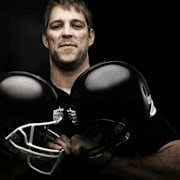Dr. Kirk Breaks Down Ayahuasca, Ibogaine, and Psychedelics

I had the chance to sit down with my good friend Dr. Kirk Parsley. We dove into the complexities of psychedelic substances like ayahuasca and ibogaine, particularly how preparation and dosing can significantly impact the experience. Doc Parsley highlighted an often-overlooked truth: the quality of these substances is not standardized, and factors like preparation, transportation, and dosing precision can make or break the experience.
Ayahuasca, a traditional brew used in shamanic rituals, is infamous for its variability. Dr. Parsley compared it to ordering an Old Fashioned at two different bars. Despite using the same liquor, one can be sublime, while the other tastes like battery acid. The same principle applies to ayahuasca. The ratios, preparation methods, and freshness of ingredients all play a role.
“When you get ayahuasca here [in the U.S.], it usually comes from Hawaii,” Doc Parsley explained. “It’s often packaged in plastic bottles, and by the time it gets to you, who knows what it’s been exposed to? Heat, sunlight, and even the plastic itself could degrade the brew.”
This lack of standardization creates a challenge for users. Unlike pharmaceuticals, where doses are measured with precision, ayahuasca lacks a reliable dosing protocol. The potency can vary wildly depending on how long the brew was boiled, the age of the ingredients, or how it was stored and transported.
Ibogaine, derived from the iboga plant, is often seen as a more controlled psychedelic option. It’s reduced to a salt form, making it easier to measure and dose. However, Doc Parsley noted that even ibogaine dosing isn’t foolproof.
“They calculate the dose based on body weight, but I’ve noticed that it seems to fall off at higher weights,” Doc Parsley shared. “Every guy around my size or bigger feels like they’re underdosed. I felt like I got underdosed.”
This observation underscores the importance of tailoring doses to the individual, especially for larger body types. While ibogaine’s salt form offers more consistency than ayahuasca, it’s still not an exact science.
Doc Parsley’s insights reinforce the idea that psychedelics, despite their growing popularity in therapeutic and self-discovery contexts, are far from standardized substances. The lack of regulation and preparation variability introduces risks and uncertainties that users need to be aware of.
Whether it’s ayahuasca brewed in a jungle or ibogaine measured in a lab, the preparation process is crucial. The way these substances are made, transported, and stored can influence not only their potency but also their safety.
For anyone considering psychedelics, Doc Parsley’s advice is clear: understand what you’re getting into. The effects of these substances are influenced by everything from preparation to body weight. With ayahuasca, the experience can vary wildly based on how the brew was prepared and stored. With ibogaine, dosing calculations may not account for everyone’s physiology, particularly at higher body weights.
Psychedelics may offer profound experiences, but they also demand respect for their complexity. As the conversation around their therapeutic use grows, the need for better standardization and education becomes increasingly important.
Tune into Power Athlete Radio for more insights from Doc Parsley as he shares his expertise on health, performance, and cutting-edge topics like this.
